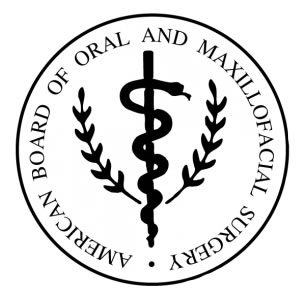Facial Trauma

Facial Trauma
As a Board Certified Oral and Maxillofacial Surgeon, Dr. Atkins has extensive training and experience in the proper treatment of facial injuries. Dr. Atkins is well versed in emergency care, acute treatment, and long-term reconstruction and rehabilitation of facial injuries. Injuries to the face impart a high degree of emotional and physical trauma to patients. The science and art of treating these injuries requires special training. It involves a hands-on experience and understanding of how the treatment will influence the patient’s long term appearance and function.
Dr. Atkins meets and exceeds these standards. He is trained, experienced, skilled, and uniquely qualified to manage and treat facial trauma. He is on staff at both Northwest Texas Hospital and Baptist Saint Anthony’s Hospitals. Dr. Atkins delivers treatment for facial injuries, which include the following conditions:
- Facial lacerations
- Intraoral lacerations
- Avulsed (knocked out) teeth
- Fractured facial bones (cheek, nose or eye socket)
- Fractured jaws (upper and lower jaw)
Causes of Maxillofacial Trauma
There are a number of possible causes of facial trauma such as motor vehicle accidents, accidental falls, sports injuries, interpersonal violence, and work-related injuries. Types of facial injuries can range from injuries of teeth to extremely severe injuries of the skin and bones of the face. Typically, facial injuries are classified as either soft tissue injuries (skin and gums), bone injuries (fractures), or injuries to special regions (such as the eyes, facial nerves or the salivary glands).

Soft Tissue Injuries of the Maxillofacial Region
When soft tissue injuries such as lacerations occur on the face, they are repaired by suturing. In addition to the obvious concern of providing a repair that yields the best cosmetic result possible, care is taken to inspect for and treat injuries to structures such as facial nerves, salivary glands, and salivary ducts (or outflow channels). Dr. Atkins is a well-trained oral and maxillofacial surgeon and is proficient at diagnosing and treating all types of facial lacerations and trauma.
Bone Injuries Of The Maxillofacial Region
Fractures of the bones of the face are treated in a manner similar to the fractures in other parts of the body. The specific form of treatment is determined by various factors, which include the location of the fracture, the severity of the fracture, the age, and general health of the patient. When an arm or a leg is fractured, a cast is often applied to stabilize the bone to allow for proper healing. Since a cast cannot be placed on the face, other means have been developed to stabilize facial fractures.
One of these options involves wiring the jaws together for certain fractures of the upper and/or lower jaw. Certain other types of fractures of the jaw are best treated by the surgical placement of small plates and screws to stabilize the involved sites. This treatment can often allow for healing and removes the necessity of having the jaws wired together after treatment. This technique is called internal rigid fixation. Rigid fixation has profoundly improved the recovery period for many patients, allowing them to return to normal function more quickly.
The treatment of facial fractures and trauma should be accomplished in a thorough and predictable manner. More importantly, the patient’s facial appearance should be minimally affected. An attempt at accessing the facial bones through the fewest incisions necessary is always made. The incisions are designed to be small and, whenever possible, are placed so that the resultant scar is hidden.
Injuries to the Teeth & Surrounding Dental Structures
Isolated injuries to teeth are quite common and may require the expertise of various dental specialists. Oral surgeons usually are involved in treating fractures in the supporting bone or in replanting teeth that have been displaced or knocked out. These types of injuries are treated by one of a number of forms of splinting (stabilizing by wiring or bonding teeth together). If a tooth is knocked out, it should be placed in salt water or milk. The sooner the tooth is re-inserted into the dental socket, the better chance it will survive. Therefore, the patient should see a dentist or oral surgeon as soon as possible. Never attempt to wipe the tooth off, since remnants of the ligament that hold the tooth in the jaw are attached and are vital to the success of replanting the tooth. Other dental specialists may be called upon such as endodontists, who may be asked to perform root canal therapy, and/or restorative dentists who may need to repair or rebuild fractured teeth. In the event that injured teeth cannot be saved or repaired, dental implants are often now utilized as replacements for missing teeth.
